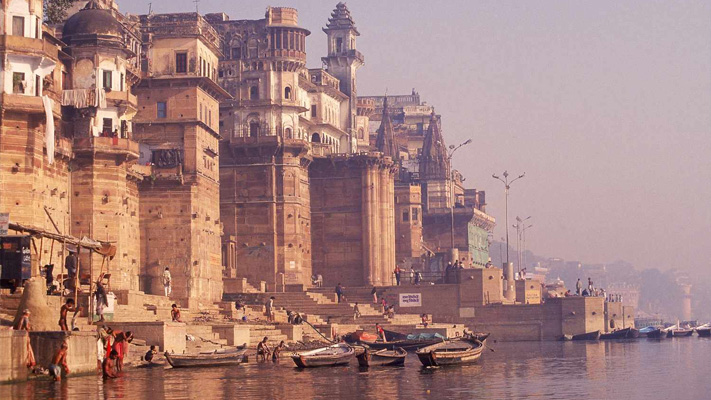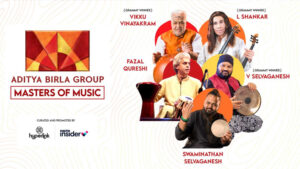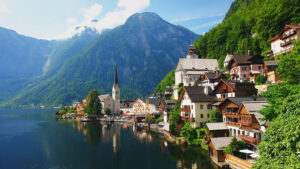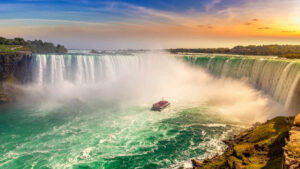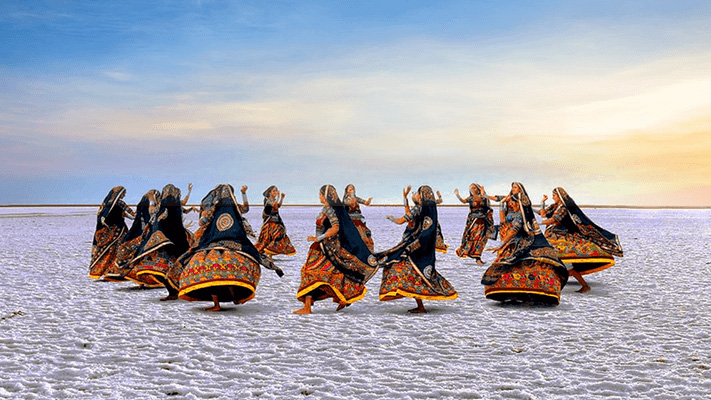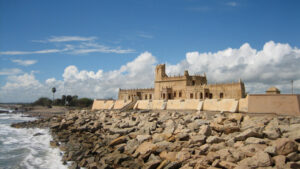THE VARANASI GHATS, UTTAR PRADESH – EMBRACE THE ETERNAL AURA OF SACRED TRADITIONS

Nestled along the banks of the sacred River Ganges, the Varanasi Ghats in the ancient city of Varanasi, India, stand as a revered and captivating destination. With a history spanning thousands of years, these series of steps leading down to the river hold immense spiritual significance for Hindus and serve as a center for religious ceremonies, rituals, and devotion. The Ghats of Varanasi offer a mesmerizing blend of spirituality, architectural marvels, and scenic beauty, attracting pilgrims, visitors, and seekers of cultural immersion from around the world. Embarking on a journey to the Varanasi Ghats is an invitation to delve into the depths of spirituality, witness ancient rituals, and experience the timeless allure of the sacred Ganges River.

Here’s what makes the Varanasi Ghats a remarkable and captivating destination:
- Spiritual Significance: The Ghats of Varanasi are a hub of spiritual activities and rituals. Pilgrims and devotees flock to the Ghats to perform sacred rites, including bathing in the holy waters of the Ganges, offering prayers, and performing cremation ceremonies. The belief is that by immersing oneself in the river’s waters or being cremated on the Ghats, one can attain liberation from the cycle of life and death.
- Rituals and Ceremonies: Witnessing the religious rituals and ceremonies at the Ghats is a mesmerizing experience. The Ghats come alive during dawn and dusk with various rituals such as the Ganga Aarti, a vibrant and elaborate fire ceremony where priests offer prayers to the river with incense, fire, and lamps, accompanied by devotional songs and chants. The atmosphere is filled with devotion, spirituality, and a sense of ancient traditions.
- Architectural Marvel: The Ghats themselves showcase a blend of architectural styles and designs. Each Ghat has its unique identity and purpose. Some Ghats are grand and adorned with ornate temples, while others are simpler and used primarily for bathing or meditation. The architecture reflects the cultural heritage and history of the region.
- Boat Rides: Taking a boat ride along the Ghats provides a different perspective of the city and its spiritual significance. It allows you to witness the Ghats from the river, observe the various activities taking place, and gain a deeper appreciation for the cultural fabric of Varanasi.
Prominent Ghats of Varanasi
Varanasi is renowned for its numerous ghats, each with its own significance and purpose. Here are some of the prominent ghats of Varanasi:

- Dashashwamedh Ghat: Considered the main and most popular ghat, Dashashwamedh Ghat is known for its grandeur and the daily Ganga Aarti ceremony. It is believed that Lord Brahma performed a grand ten-horse sacrifice (dashashwamedh) at this spot.
- Manikarnika Ghat: One of the most sacred and important ghats in Varanasi, Manikarnika Ghat is the primary cremation ghat. It is believed that cremation here leads to moksha (liberation from the cycle of rebirth).
- Assi Ghat: Located at the confluence of the Ganges and Assi rivers, Assi Ghat holds significant mythological and historical importance. It is associated with the sage Assi, who is believed to have meditated here.
- Harishchandra Ghat: Similar to Manikarnika Ghat, Harishchandra Ghat is also dedicated to cremation rituals. It is named after the legendary King Harishchandra, known for his truthfulness and devotion.
- Man Mandir Ghat: Known for its ornate architecture and exquisite balconies, Man Mandir Ghat is an ancient ghat constructed by Maharaja Man Singh of Amber in the 16th century. It offers a panoramic view of the river and the city.
- Tulsi Ghat: Named after the renowned poet-saint Tulsidas, Tulsi Ghat is associated with his works, especially the Ramcharitmanas. It is believed to be the spot where Tulsidas had a vision of Lord Ram.
- Scindia Ghat: Built by the Scindia family of Gwalior, Scindia Ghat is known for its stunning architecture, including a beautiful Shiva temple. It is considered auspicious to take a dip at this ghat during festivals.
- Panchganga Ghat: Panchganga Ghat is believed to be the meeting point of five rivers, symbolizing their spiritual significance. It is considered a sacred spot for performing rituals and taking a holy bath.
These are just a few of the prominent ghats in Varanasi. Each ghat has its own unique charm, history, and religious importance, collectively contributing to the spiritual tapestry of the city and attracting pilgrims, tourists, and seekers of spiritual enlightenment.
Visitor Experiences and Activities
When visiting the ghats of Varanasi, there are several visitor experiences and activities that you can engage in. Here are some of the key ones:

- Witness the Ganga Aarti: The Ganga Aarti ceremony is a mesmerizing ritual that takes place every evening at Dashashwamedh Ghat. Join the crowds to witness the enchanting spectacle of priests offering prayers, lighting oil lamps, and chanting hymns dedicated to the River Ganges. It’s a captivating and spiritually uplifting experience.
- Take a Boat Ride on the Ganges: Explore the ghats from a different perspective by taking a boat ride on the Ganges River. Witness the ghats come alive with rituals, observe devotees taking holy dips, and soak in the serene atmosphere. Sunrise and sunset boat rides offer especially enchanting views.
- Experience a Sunrise/Sunset Ritual: Wake up early to witness the breathtaking sunrise over the Ganges and engage in morning rituals performed by devotees. Alternatively, experience the magical atmosphere of the ghats during sunset, as the river reflects the warm hues of the sky.
- Take a Guided Walking Tour: Join a guided walking tour that takes you through the narrow lanes and various ghats of Varanasi. Learn about the history, architecture, and cultural significance of each ghat while immersing yourself in the vibrant atmosphere of the city.
- Attend a Classical Music or Dance Performance: Varanasi is renowned for its rich cultural heritage, including classical music and dance. Check local listings to see if there are any performances happening at the ghats or nearby venues. Attending a live performance can be a captivating way to appreciate the traditional arts of the region.
- Engage in Seva (Service): Many organizations and individuals offer the opportunity to participate in seva (selfless service) activities at the ghats. You can contribute by volunteering in initiatives such as serving meals to the needy, cleaning the ghats, or supporting local educational projects.
Other Major Attractions
In addition to the Varanasi Ghats, there are several other major attractions in the city that are worth exploring. Here are some of the key ones:
- Kashi Vishwanath Temple: This revered Hindu temple dedicated to Lord Shiva is one of the most important religious sites in Varanasi. It attracts devotees from all over the world and is known for its stunning architecture and spiritual significance.
- Sarnath: Located just a few kilometers from Varanasi, Sarnath is a significant Buddhist pilgrimage site. It is where Lord Buddha gave his first sermon after attaining enlightenment. Explore the ancient ruins, visit the Dhamek Stupa, and immerse yourself in the peaceful ambiance of this historical place.
- Ramnagar Fort: Situated on the banks of the Ganges River, Ramnagar Fort is a grand 18th-century fortress that serves as the residence of the royal family of Varanasi. Explore the museum inside the fort, which displays a collection of vintage cars, armor, and royal artifacts.
- Bharat Kala Bhavan: Located within the Banaras Hindu University campus, Bharat Kala Bhavan is an art and archaeological museum that houses an extensive collection of paintings, sculptures, textiles, and other artifacts. It offers insights into the rich artistic and cultural heritage of the region.
- Banaras Hindu University (BHU): Take a stroll through the sprawling campus of BHU, one of India’s premier educational institutions. Admire the impressive architecture, visit the famous Vishwanath Temple within the campus, and explore the serene green spaces.
- Alamgir Mosque: Also known as Beni Madhav Ka Darera, Alamgir Mosque is an architectural marvel located near the Panchganga Ghat. It is a blend of Hindu and Mughal architectural styles and offers panoramic views of the Ganges River.
- Gyanvapi Mosque: Adjacent to the Kashi Vishwanath Temple, Gyanvapi Mosque is a significant religious site in Varanasi. It is believed to be constructed on the remains of an ancient Hindu temple and showcases architectural influences from different eras.
- Tulsi Manas Temple: Dedicated to Lord Rama, Tulsi Manas Temple is a modern temple constructed in white marble. The walls of the temple are adorned with verses from the Ramcharitmanas, the famous epic poem written by the saint Tulsidas.
What to Shop
- Banarasi Silk Sarees: Varanasi is renowned for its exquisite Banarasi silk sarees. Explore the local markets and shops to find a wide variety of beautifully woven silk sarees adorned with intricate designs and motifs. It’s a perfect opportunity to indulge in the city’s rich textile heritage.
- Handicrafts and Artwork: Varanasi is known for its vibrant handicrafts and artwork. Look out for intricately carved wooden items, brassware, stone carvings, and traditional artwork like Madhubani paintings and silk brocades. The markets around Vishwanath Gali and Godowlia are popular places to find these crafts.
- Musical Instruments: Varanasi has a long-standing association with classical Indian music. You can find a range of musical instruments like sitars, tabla drums, and harmoniums in the markets. Explore the musical instrument shops around Lahurabir and Bengali Tola for a memorable shopping experience.

Best Time to Visit
The best time to visit Varanasi is during the winter months from November to February when the weather is mild and pleasant. Here’s why:
Weather: Winter in Varanasi is characterized by cooler temperatures and lower humidity, providing a more comfortable experience for exploring the city and its attractions.
Cultural Events: Varanasi is known for its vibrant cultural events and festivals. The winter months coincide with several important festivals and celebrations, including Dev Deepawali, Ganga Mahotsav, and the Kumbh Mela (held every 12 years). These events offer a unique opportunity to witness traditional rituals, processions, music, dance performances, and the city’s lively atmosphere.
Dev Deepawali, celebrated in November, is a grand festival where the ghats are beautifully illuminated with thousands of oil lamps, and the Ganga Aarti ceremony takes on a special significance. Ganga Mahotsav, held in November or December, is a cultural extravaganza featuring music, dance, and cultural performances along the ghats. The Kumbh Mela, a massive gathering of pilgrims, is a deeply spiritual event that occurs every 12 years, attracting millions of devotees from around the world.
It’s important to note that winter is also the peak tourist season in Varanasi, so the city can get crowded during this time. It’s advisable to plan and book accommodations and tours in advance to ensure a smooth and enjoyable visit.


